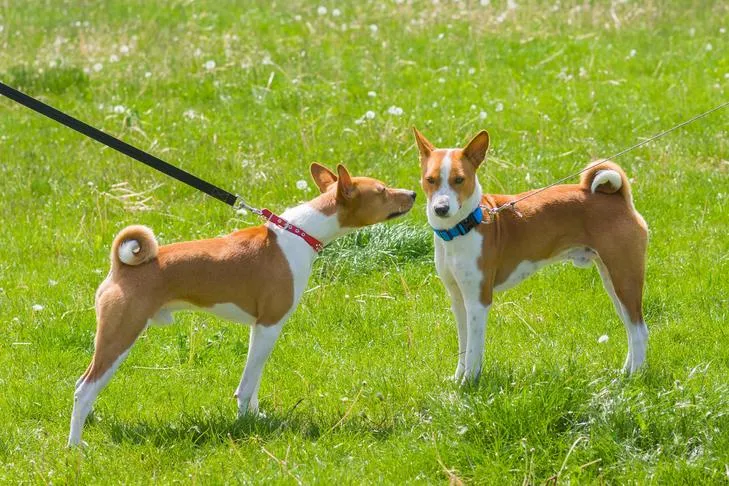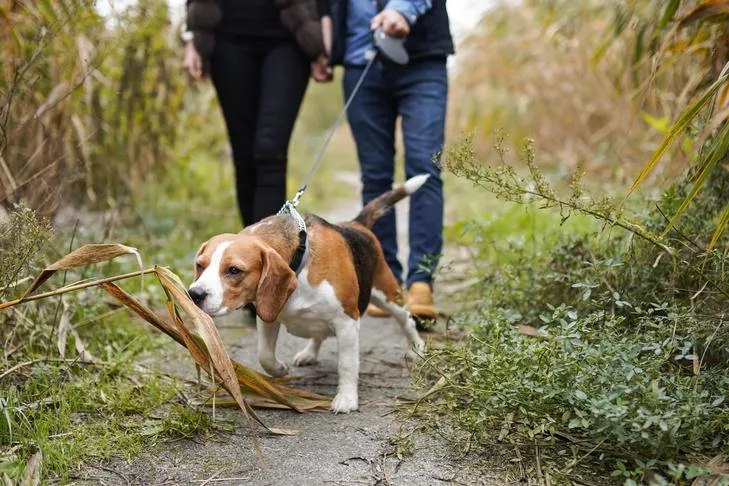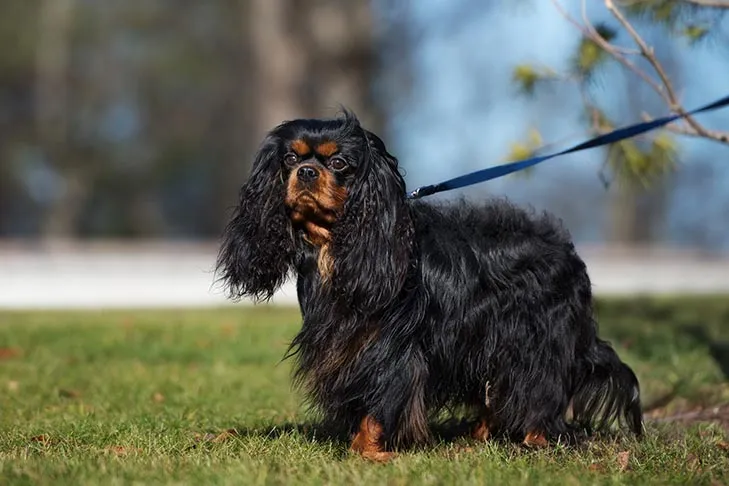Walking your puppy should be a joyous and relaxing experience, not a tug-of-war. For many dog owners, learning how to get puppy to walk with leash politely is one of the most common and frustrating challenges. Puppies, full of energy and curiosity, often pull on the lead in an effort to explore their exciting surroundings faster or to reach a fascinating scent. While a small puppy pulling might seem cute, it can quickly become a serious problem as they grow, potentially leading to injuries for both of you and making walks unbearable.
Beyond the physical discomfort, a dog that constantly pulls on the lead can be a safety hazard, especially in public areas where they could run into traffic or get into altercations. Effective leash training is crucial for ensuring your puppy’s safety and your peace of mind. The good news is that with consistent effort and the right techniques, you can teach your puppy to walk calmly by your side. This guide offers 10 practical tips to help you transform your pulling puppy into a pleasant walking companion.
1. Always Reward Good Leash Behavior
It’s easy to overlook good behavior when you’re primarily focused on correcting bad habits. However, positive reinforcement is fundamental to teaching your puppy appropriate leash manners. Puppies, like all dogs, are more likely to repeat actions that result in a positive outcome. This reward could be a tasty treat, verbal praise, a gentle pet, or even the chance to sniff something interesting. If you only pay attention when your puppy is pulling, you inadvertently teach them that pulling is a way to get your attention or move forward.
Make it a habit to carry small, high-value treats on every walk. Whenever your puppy walks with a loose lead, even for a few steps, immediately reward them. In the initial stages of training, be generous with your rewards, offering them frequently. As your puppy becomes more proficient, you can gradually reduce the frequency of treats, substituting them with environmental rewards like a brief sniff break or a moment to observe something intriguing, reinforcing that polite walking opens up more enjoyable experiences.
2. Never Let Your Puppy Walk When They Are Pulling
One of the most critical rules in how to stop my puppy from pulling on the lead is to ensure that pulling never gets your puppy what they want—to move forward. If your puppy pulls and you continue walking, you are effectively rewarding the pulling behavior. This reinforces the idea that pulling is an effective strategy to reach their desired destination. To break this cycle, you must become a stationary object the moment tension appears on the lead.
The instant your puppy pulls, stop completely. Plant your feet firmly and wait. Do not move forward until the lead slackens and your puppy either turns to look at you or eases the tension. This might mean standing still for several seconds or even a minute. Your puppy needs to learn that pulling immediately halts progress, while a loose lead means the walk can continue. Consistency is key here; every time you let them pull, you undermine your training efforts.
 Two Basenjis meet in a grassy field, one puppy on a loose leash, demonstrating polite interaction.
Two Basenjis meet in a grassy field, one puppy on a loose leash, demonstrating polite interaction.
3. Wait for a Loose Lead Before You Walk
Knowing when to resume walking after a stop is crucial. The signal to restart your walk should always be a loose lead, which typically forms a “J” shape. Additionally, your puppy should ideally turn their attention back to you, even if it’s just a glance. In the early stages of training, this waiting period might feel long, and your puppy might be confused. They will eventually look back to see why you’ve stopped or what’s holding them up.
The moment you see that slack in the lead and your puppy’s attention shifts to you, offer immediate praise and a treat right at your side. Then, calmly continue the walk. Initially, you might find yourself stopping and starting every few steps. This stop-and-go method teaches your puppy that pulling stops the fun, but walking politely allows them to continue exploring the world. Patience and repetition are your best tools in this phase of training.
4. Incorporate Life Rewards on Your Walk
Walks should be a rich and stimulating experience for your puppy, offering more than just a potty break. They provide vital physical exercise and mental stimulation. You can supercharge your loose-leash training by incorporating “life rewards.” These are everyday things your puppy naturally enjoys, such as the opportunity to sniff a fascinating bush, greet a friendly person, or investigate a new texture. By linking these enjoyable activities to polite leash behavior, you make good manners even more rewarding.
For example, if your puppy walks with a loose lead for a set distance (say, 10 feet), release them with a verbal cue like “Go sniff!” to explore a particular spot for a minute or two. This teaches them that walking nicely earns them access to the very things they desire most on a walk. This strategy not only reinforces good behavior but also makes the walk itself more engaging and fulfilling for your puppy, making them more likely to focus on you and their manners.
5. Walk at a Good Pace
Often, puppies pull because their human companions are walking at a pace that is simply too slow for their natural stride and energy levels. Even small breeds, especially energetic puppies, have a faster gait than many people realize. They are eager to move, and when restricted, they resort to pulling. Adjusting your walking speed can significantly impact your puppy’s tendency to pull.
While you are teaching how to get dog not to pull on lead, try to maintain a brisker pace that feels comfortable for both of you. A slightly faster walk can help keep your puppy engaged and reduce their desire to pull ahead. As they become more accustomed to walking politely, you can then work on teaching them to match your desired pace more precisely. A rhythmic, consistent pace makes it easier for your puppy to understand the expectation of walking alongside you.
6. Be Consistent With Your No-Pulling Rule
Consistency is the bedrock of effective puppy training. It can be incredibly tempting to let your puppy pull on the lead when you’re in a hurry, it’s raining, or you just want to get to your destination quickly. However, every single time you allow your puppy to pull, you are reinforcing the unwanted behavior and setting your training back. This sends mixed signals, making it harder for your puppy to understand what is expected of them.
Regardless of the weather or your schedule, commit to the no-pulling rule. If you’re short on time, it might be better to let your puppy do their business in the yard and save dedicated leash training for when you have ample time and patience. Until your puppy consistently walks on a loose lead for extended periods, any lapse in your consistency will make the training process longer and more challenging.
 A Beagle puppy pulls intensely on its leash, eager to sniff an interesting spot during an outdoor walk.
A Beagle puppy pulls intensely on its leash, eager to sniff an interesting spot during an outdoor walk.
7. Keep Training Sessions Short and Fun
Working with a determined puppy that pulls on the lead can be mentally and physically draining. It’s easy to get frustrated, especially when progress seems slow, and you find yourself barely getting past your driveway. To prevent both you and your puppy from becoming disheartened, keep training sessions brief, positive, and enjoyable. Puppies, particularly young ones, have very short attention spans. Asking too much too soon will likely lead to frustration and diminish their willingness to learn.
Focus on quality over quantity. Instead of trying to achieve a specific distance, aim for successful loose-leash walking, even if it’s only for a short block. End each session on a high note, even if it means finishing after just a few successful steps. This approach keeps your puppy motivated and eager for the next training session, associating leash training with positive experiences rather than pressure or boredom.
8. Be Interesting and Engaging on Walks
The outdoor world is a sensory overload for puppies—filled with new sights, sounds, and an irresistible array of smells. This rich environment constantly competes for your puppy’s attention, making it easy for them to forget you and pull towards whatever has captured their interest. If you are disengaged, perhaps engrossed in your phone, your puppy has little incentive to focus on you.
To counteract these distractions, become the most exciting thing on the walk. Talk to your puppy, offer sudden changes in direction, play quick games of “find the treat” at your side, or simply vary your pace. This keeps your puppy guessing and looking to you for what will happen next, making them more attentive and less likely to pull. Your engagement fosters a stronger bond and reinforces the idea that good things happen when they pay attention to you.
9. Stay Calm
Walks can present many emotionally charged situations for your puppy, from encountering an unfamiliar person to seeing another barking dog. Puppies are highly attuned to human emotions and can easily pick up on your stress, anxiety, or excitement. If you become agitated or frustrated when your puppy pulls, your mood can inadvertently escalate their own emotions, intensifying their excitement or fear.
To help your puppy remain calm and focused, it’s crucial that you maintain your own composure. Speak in a calm, reassuring tone. Avoid jerking the leash or shouting. A relaxed handler signals to the puppy that there’s no need to be overly anxious or excited. The calmer your puppy is, the more receptive they will be to your cues and the more likely they are to walk politely on the lead. Remember, your emotional state directly impacts your puppy’s behavior.
 A relaxed Cavalier King Charles Spaniel walks calmly on a lead outdoors, demonstrating good leash manners.
A relaxed Cavalier King Charles Spaniel walks calmly on a lead outdoors, demonstrating good leash manners.
10. Engage Your Puppy In Distracting Situations
Distractions are one of the biggest culprits when it comes to my dog wont stop pulling on the leash. Whether it’s another dog, a squirrel, or a person your puppy finds exciting or suspicious, their good leash manners can quickly vanish. Puppies might pull towards something they want to investigate or pull away from something that scares them. In either scenario, the lead becomes tight.
The key to managing distractions is to proactively redirect your puppy’s focus back to you before they become fixated. As soon as you spot a potential distraction, engage your puppy. This could involve calmly offering a stream of treats, playing a quick “touch” game with your hand, or asking for a simple “sit” or “watch me” command. These exercises are easy for your puppy to perform and help them maintain focus on you until the distraction passes. By grabbing their attention early, you can often prevent them from even noticing the distraction or reacting to it with a pull.
Learning How To Stop A Puppy From Pulling On Lead requires patience, consistency, and a positive approach. By implementing these 10 tips, you can transform walks from a struggle into an enjoyable bonding experience for both you and your furry companion. Remember that every puppy learns at their own pace, so celebrate small victories and stay committed to the training process.
